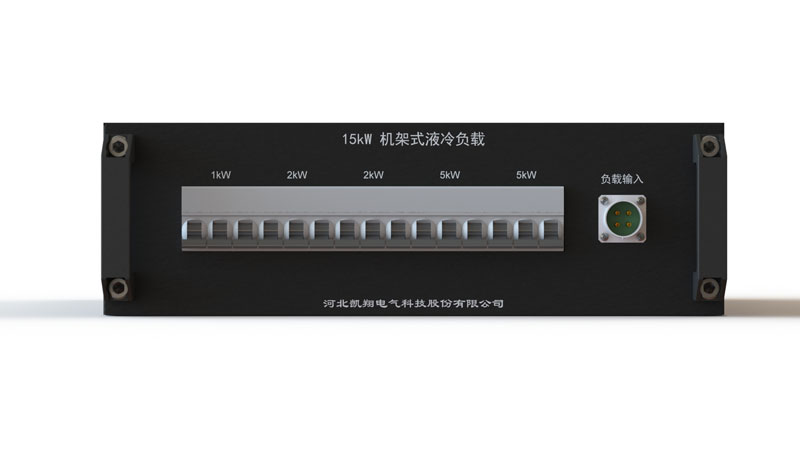With the rapid development of technology, the requirements for equipment performance in numerous fields are increasingly rising. The emergence of high-power devices has made heat dissipation a crucial factor affecting the stable operation and performance of equipment. As an efficient heat dissipation solution, the liquid cooling load bank has been widely applied in various industries due to its unique advantages.

15kW Liquid Cooling Load Bank
I. Main Characteristics of Liquid Cooling Load Bank
(1) High-Efficiency Heat Dissipation
The liquid cooling load bank uses liquid as the refrigerant. Liquid has a much higher thermal conductivity coefficient than gas. Data shows that the heat carried away by the same volume of liquid is about 3,000 times that of the same volume of air, and the heat conduction capacity of liquid is about 25 times that of air. Such excellent heat conduction performance enables the liquid cooling load bank to quickly and efficiently remove the heat generated by equipment, creating a low-temperature and stable operating environment for the equipment. In the application scenario of servers in data centers, servers generate a large amount of heat during operation. Traditional air cooling methods are often difficult to meet the rapid heat dissipation requirements. However, the liquid cooling load bank can directly introduce the cooling liquid to the position close to the heat source inside the server, such as key heat-generating components like the CPU and GPU, and quickly conduct away the heat, ensuring the stable operation of the server and effectively improving its performance.
(2) Energy Saving and Consumption Reduction
Thanks to the high heat dissipation efficiency of the liquid cooling load bank,equipment can operate stably at a lower temperature, which helps reduce the energy consumption during equipment operation. Take data centers as an example. The application of liquid cooling technology (especially immersion liquid cooling) can reduce the Power Usage Effectiveness (PUE) value of data centers to below 1.2. Compared with traditional air cooling technology, it can save 30% - 50% of electricity. This not only reduces the operating costs for enterprises but also conforms to the current global development trend of energy conservation and environmental protection, helping enterprises achieve green and sustainable development.
(3) High Stability
High temperature is an important factor affecting the stability and lifespan of electronic equipment. The liquid cooling load bank can precisely control the equipment temperature, preventing problems such as performance degradation, malfunctions, or even damage caused by overheating of the equipment. At the same time, the liquid cooling system operates without the vibration and noise interference generated by fan rotation, reducing the risk of mechanical damage to the precision components inside the equipment, further enhancing the stability and reliability of equipment operation, and extending the service life of the equipment.
(4) Space Saving
The heat dissipation system of the liquid cooling load bank is more compactly designed. In the server rack layout, the liquid cooling system can directly deliver the cooling liquid to the inside of the server. There is no need to equip a large number of bulky radiators and fans like the air cooling system, thus effectively saving valuable space. This enables more efficient use of space in places with limited space, such as data centers, and improves space utilization. Moreover, liquid cooling technology supports a higher rack power density, which can meet the extremely high requirements for equipment power density in scenarios such as high-performance computing and AI applications.
(5) Low Noise
Traditional air-cooled load banks mainly rely on the high-speed rotation of fans for heat dissipation, generating relatively loud noise during operation. In environments with strict noise control requirements, such as hospitals, schools, and office buildings, it will interfere with the surrounding environment. The liquid cooling load bank adopts a closed-loop circulation system and does not require fans during operation, which greatly reduces noise generation and creates a quiet and comfortable working environment for staff.
(6) Environmentally Friendly and Sustainable
The liquid cooling load bank adopts a closed-loop circulation system, with extremely low consumption of cooling liquid and a low leakage risk. At the same time, due to its high-efficiency heat dissipation performance, the waste heat generated by equipment operation is reduced, and the corresponding thermal pollution to the environment is also decreased, meeting the strict requirements of current society for environmental protection and sustainable development and helping to promote the green transformation of the industry.
 2024-09-11
2024-09-11 2023-04-21
2023-04-21 2023-04-06
2023-04-06 2022-05-05
2022-05-05 2022-05-05
2022-05-05

